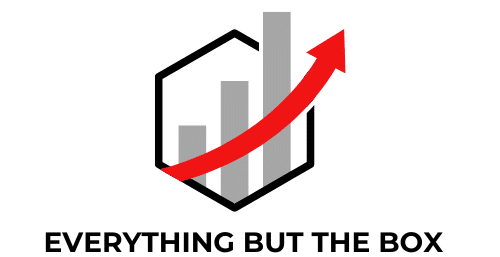What are the Essential Considerations for Choosing Ethical Outerwear?

Ethical and sustainable are buzzwords in today’s fashion industry. But what do they mean, and how do they apply to your wardrobe – specifically, your jackets and other outerwear? Fashion isn’t just about aesthetics anymore. It’s about understanding the impact of your purchases on the world and making choices that are both stylish and responsible. Ethical outerwear is part of this movement, and in this article, we’ll explore what it means and how to make the best choices for your wardrobe and the environment.
The Importance of Ethical Outerwear
In a world where fast fashion has become the norm, a counter-movement is growing. Ethical outerwear, a term used to describe jackets and other outerwear that are made with respect for both the people who create them and the environment, is becoming increasingly popular. Brands that focus on sustainable and ethical practices are gaining momentum, and for good reason.
Additional reading : How Can You Style Second-Hand Clothes to Look On-Trend?
Ethical clothing takes into account the entire lifecycle of a product. This includes everything from the materials used to the working conditions of the people who make them. For instance, a jacket made from recycled materials that is produced in a factory where workers are paid fair wages and work in safe conditions would be considered ethical.
More than just a fashion statement, choosing ethical outerwear is a way of supporting brands that prioritize sustainability and fairness. It’s a way of using your purchasing power to make a positive impact.
Also read : What are the Best Ways to Incorporate Linen for a Summer Wardrobe?
The Best Ethical Materials for Outerwear
When it comes to ethical outerwear, the materials used are of the utmost importance. Even the most ethically-produced jacket loses its sustainability credentials if it’s made from non-renewable resources. Thus, it’s crucial to consider the materials when shopping for ethical clothing.
Materials like organic cotton and recycled polyester are common in ethical outerwear. Organic cotton is grown without the use of harmful chemicals, making it a sustainable choice. Recycled polyester is made from used plastic bottles, diverting them from landfills and giving them a new life.
Another popular material is faux leather. While traditionally, leather jackets have been a staple in many wardrobes, the leather industry is rife with ethical and environmental issues. Faux leather offers a cruelty-free and often more sustainable alternative.
When shopping for ethical outerwear, look for brands that clearly label the materials used in their products and provide information about their sourcing and production processes.
Brands Leading the Way in Ethical Outerwear
Thankfully, you’re not alone in your quest for ethical outerwear. Many brands are leading the way, offering sustainable and ethically-made jackets and coats that don’t compromise on style.
One such brand is Patagonia. Known for their outdoor gear, Patagonia has made a commitment to ethical and sustainable practices. They use recycled materials in many of their products, pay fair wages, and are transparent about their supply chain.
For women’s outerwear, Eileen Fisher is another brand to consider. They focus on sustainable materials, ethical production, and timeless design.
Also worth noting is Everlane, which has built its brand on "radical transparency,” offering detailed information on the factories where their clothes – including outerwear – are made.
When shopping for ethical outerwear, seek out brands that align with your values and prioritize sustainability and fair labor practices.
Where to Shop for Ethical Outerwear
Knowing which brands offer ethical outerwear is one thing, but where can you find these products? Many ethical brands sell their products online, often on their own websites. This allows them to control the entire shopping experience and ensure it aligns with their brand values.
Physical stores that prioritize ethical and sustainable products are also becoming more common. These can be a great place to try on different jackets and coats, ask questions about the products, and get a sense of the brand’s ethos.
Second-hand shops are another option. By buying second-hand, you’re extending the life of a garment, reducing the demand for new products, and preventing clothing from ending up in a landfill.
Remember, buying ethical outerwear often means investing in higher-quality pieces that will last. While these items may be more expensive upfront, the cost per wear often ends up being lower than fast fashion alternatives.
Caring for Your Ethical Outerwear
Once you’ve found the perfect ethical jacket or coat, it’s important to care for it properly to ensure it lasts. Many ethical brands will provide care instructions with their products. These might include washing less frequently, using a gentle cycle, or avoiding the dryer.
Taking good care of your ethical outerwear not only extends its lifespan but also reduces its environmental impact. After all, less washing means less water usage and fewer microfibers released into the water system.
Remember, the most sustainable garment is the one you already own. By choosing ethical outerwear and caring for it properly, you can make a positive impact on the fashion industry and the environment.
Ethical Outerwear Brand Ratings: A Useful Guide
Searching for ethical outerwear can be overwhelming with so many brands claiming to be sustainable and ethical. However, brand ratings can be a helpful guide in distinguishing between genuinely committed brands and those using sustainable language for marketing purposes.
These ratings assess various key aspects like the use of recycled materials, fair trade practices, and transparency in supply chains. For instance, the brand Patagonia has consistently high ratings due to its commitment to using recycled and organic materials and ensuring fair trade. This outdoor clothing brand also offers detailed information about its supply chain, further confirming its commitment to ethical practices.
Another brand with a high rating is Everlane. Their "radical transparency" approach provides customers with detailed information about the factories where their clothes, including outerwear, are produced. This transparency enables customers to make informed choices about their purchases.
While brand ratings are not the sole determinant of a brand’s ethical stance, they provide valuable insights into the company’s operations. When looking for ethical outerwear, ensure you check a brand’s rating and delve deeper into their practices before making a purchase.
Ethical Winter Choices: Cosy and Conscientious
Selecting ethical winter outerwear might require a bit more thought since you need to ensure that the clothing can withstand harsh weather while adhering to ethical principles. Luckily, numerous brands offer winter gear that is both warm and responsibly made.
One such brand is Fjällräven, a Swedish outdoor clothing brand known for its eco-friendly practices. They use sustainable materials like recycled polyester and organic cotton in their products, and they are committed to minimizing their environmental impact.
Leather jackets are a popular winter choice, but the traditional leather industry is fraught with ethical and environmental issues. Faux leather jackets are a fantastic alternative. They provide the same stylish look and warmth as traditional leather jackets, but they are cruelty-free. Brands like Matt & Nat offer luxury rated faux leather jackets that not only look good but are also ethically made.
When shopping for ethical winter outerwear, consider the materials used, the brand’s ethical practices, and the functionality of the clothing. By making ethical winter choices, you are not only protecting yourself from the cold but also making a positive impact on the fashion industry.
In Conclusion: Your Role in Advancing Ethical Fashion
Ethical outerwear has a substantial role in advancing ethical and sustainable fashion. By investing in ethical outerwear, you are making a difference both in the fashion industry and in the environment. Ethical outerwear represents a shift away from fast fashion towards a more sustainable and fair future for fashion.
When selecting ethical outerwear, remember to consider the materials used, the brand’s ethics, and the treatment of workers in the supply chain. Also, take into account the brand ratings to better inform your decisions.
Second-hand outerwear is also a worthy consideration. Second-hand purchases extend the lifespan of clothing and reduce demand for new, potentially non-ethical, products.
Lastly, caring for your clothing properly can extend its lifespan and further reduce its environmental impact. Follow the care instructions provided by the brand and remember to wash less frequently and avoid the dryer when possible.
The choice of ethical outerwear is more than a purchase; it is a statement of your values and your commitment to a more sustainable and fair future. Be a part of the change you want to see in the fashion industry and take the first step by choosing ethical outerwear.
